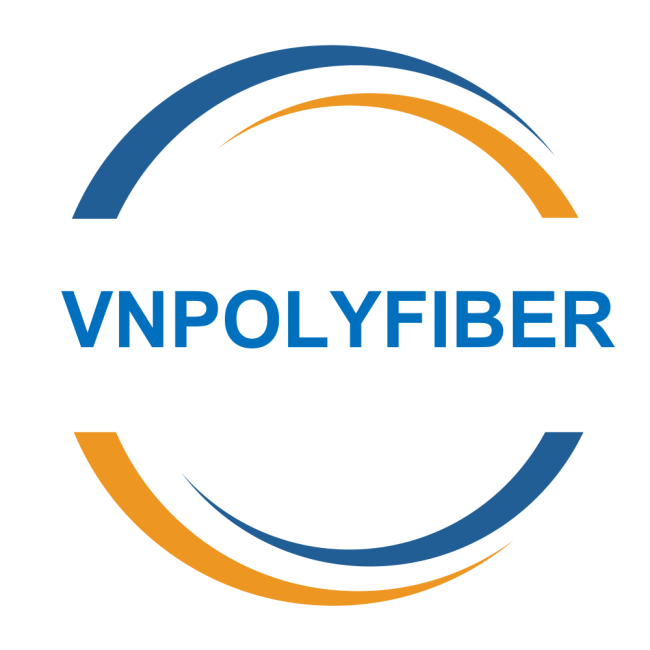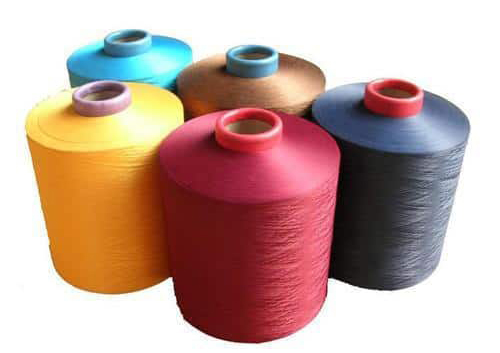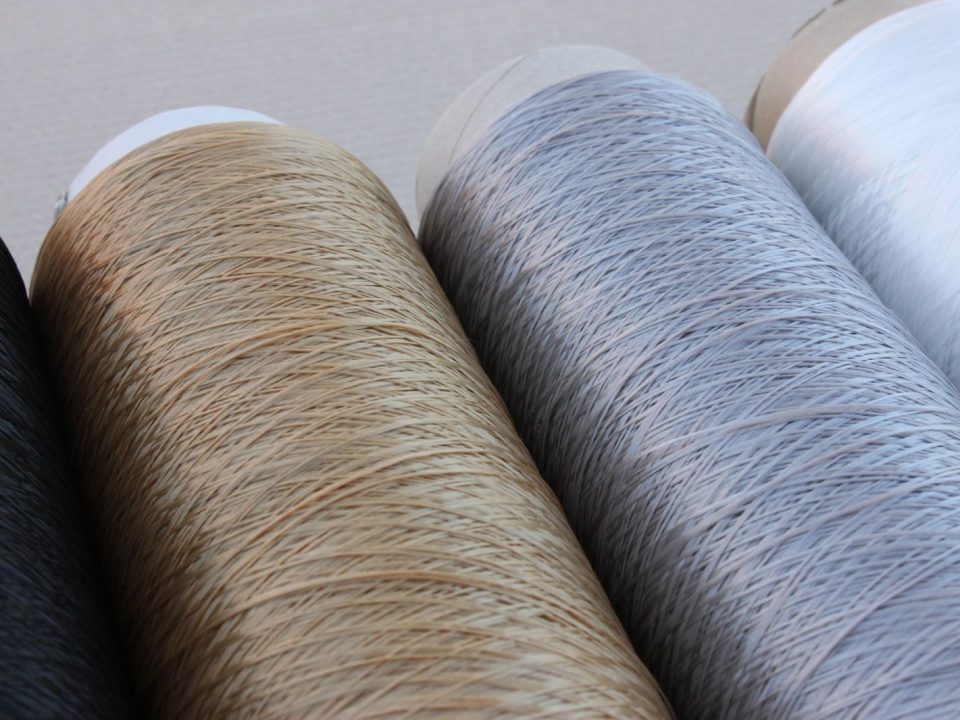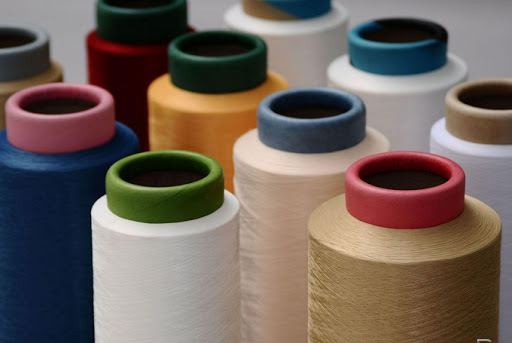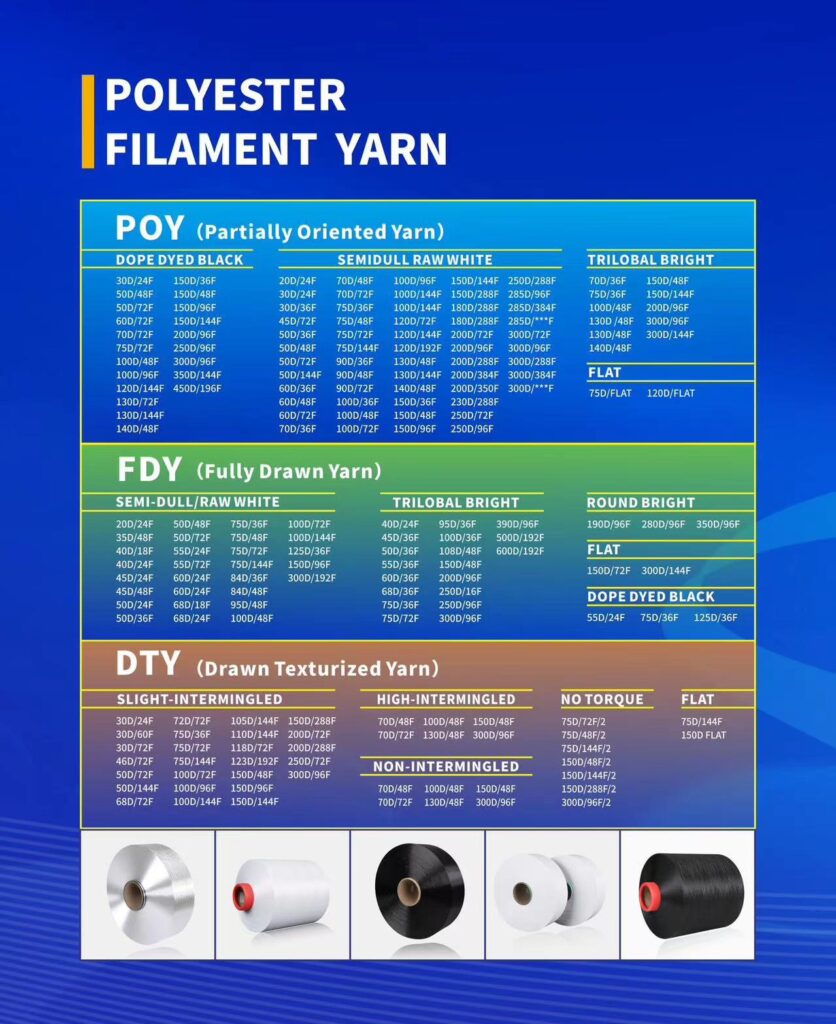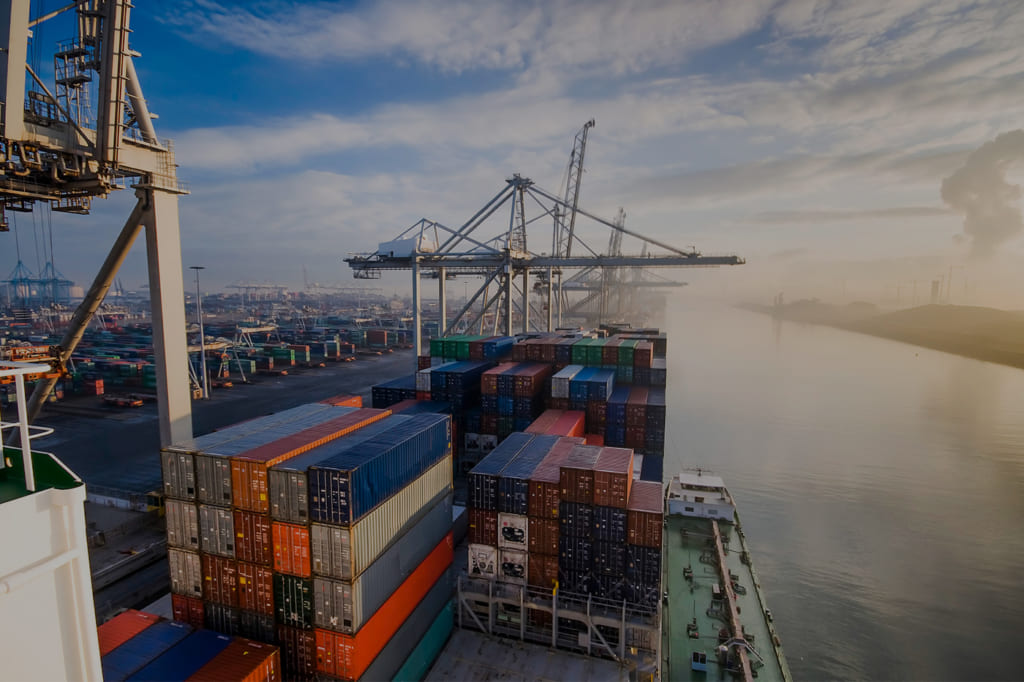What is yarn?
Yarn is the basic element with which a fabric is made of. Yarn is made by grouping or twisting together several strands of fibers to make a continuous length of interlocked fibers. This grouping or twisting is achieved by a process called spinning.
Fibers that make the yarn can be natural or synthetic or a blend of both. The most commonly used natural fiber is cotton. Some other natural fibers are jute, linen bamboo, silk, wool, and angora. Among the synthetic fibers, polyester is the most widely used one.
The yarns are woven or knitted together to make fabric. The yarns or threads are also used in crocheting, knitting, embroidery, and for making rope. Some fabrics like chiffon can be made of multiple types of yarns – like silk chiffon, polyester chiffon.
Different types of yarns
By type of fibers
Yarns can be grouped into two main categories based on the type of fibers – natural or synthetic. Natural fibers are again divided into two groups namely cellulose fiber and protein fiber.
Cellulose fibers
Cellulose fiber comes from plants and the most commonly used cellulose fiber is cotton. Other sources of cellulose fiber are jute, bamboo, hemp, flax, sisal, etc
Protein fibers
Protein fibers are sourced from insects and animals. The most famous of them are wool (from animals) and silk (from insect larvae ). Some other sources are goats, alpacas, llamas, rabbits, etc.
Synthetic fibers
Synthetic fibers are polymers found in natural gas or by-products of petroleum. They are made from acrylic or polyester or nylon. Nylon yarns are also called Polyamide yarns
Blended yarns
Nowadays, natural and synthetic yarns are spun together to get the best characteristics of both. Blended yarns consist of two or more type of Fibers. Blending combines the desirable qualities of different Fibers. Thus you have many blends like cotton and polyester where you get the softness of cotton and longevity of polyester. Blended yarns can be made of spun yarns or filament yarns or a mixture of both.
Linen yarns
There are two main types of linen yarn called Tow and Line. Tow linen yarn is spun from short fibers and is rather coarse in nature but has greater absorbency. Line linen is made up of longer fibers about 15 inches in length, so it is smoother. They are soft, shiny and a common example of fabric made from this yarn is fine table linen. Other linen yarns are wet spun linen and dry spun linen.
Woolen and Worsted yarns
Woolen yarns are made of carded yarns and are fuzzy and bulky. Eg: tweed. Worsted yarns are spun from fibers that have been combed; they are lightweight; these yarns are used for knitting. Eg: gabardine.
By Stretch
A stretch yarn is very important to make fabrics that stretch like stretch denim, stretch lace. Stretch of the fabric depends on the type of yarn as well as the construction. When yarns are interlooped as in knitting it results in a stretchy fabric, whereas when yarn is woven there is not much stretch.
There are three types of stretch yarns. Bare elastic Yarns, Covered Elastic Yarns, Core spun Yarns.
Bare Elastic Yarns
These yarns are made up of monofilament spandex fiber. They are widely used in power stretch fabrics. As such Spandex is high stretch but not very strong. It is usually mixed with other yarns to make fabric with stretch. The usual combinations are cotton-spandex, acrylic-spandex, Polyester-spandex. The spandex yarn/bare elastic yarn is used to make spandex core-spun yarn, spandex twisted yarn and spandex covered yarn
Covered Elastic yarns
These yarns are made up of monofilaments that are covered with a spun or filament yarn in a spiral manner They are commonly used in power stretch fabrics which need more powerful shape control.
Core-Spun yarns
These yarns have a spandex core and staple fibers are spun around the spandex core, resulting in a stretchy and smooth yarn (depending on the outer fiber, usually natural fibers). They are used in comfort stretch fabrics. Also called Corespun spandex yarns. It is not as strong as other stretchy yarns.
By number of fibers
Single yarn
This yarn is made from a number of staple fibers
Double yarn
This yarn is made by keeping 2 single yarns as one.(Also called ply yarn)
Cabled yarn
This yarn is amde by twisting together more than one doubled yarn (ply yarn). Also called Cord yarn.
By size of the fibers
Spun yarn
Fibers that are short in length are called staple fibers. Most natural Fibers except silk exist in staple form. These short fibers are first laid parallel and alternately and pull and twist to make a single thread. The process is called spinning and the resulting yarns are called spun yarns. Spun yarns can be natural or synthetic
Filament yarns
Fibers that are longer in length measured in kilometers like silk or synthetic fibers are twisted together or grouped to make filament yarns. Most filament yarns are lightly or low twisted to retain the smoothness and the lustrous of the surface. But sometimes they are tightly twisted to add some special characteristics like that of crepe. But generally they are smoother and lustrous than spun yarns.
Filament yarns can be made of a single filament or many filaments called monofilament yarn or multifilament yarns.
Sometimes, filament fibers are cut into short uniform lengths to match the staple fibers and both are spun together to create blended yarns.
Monofilament yarn
Also known as mono yarn, it is a single relatively thicker continuous strand of synthetic fiber. It is stiffer and less flexible than a multi-filament. Examples are transparent sewing thread, bristles of a toothbrush, filter fabrics, and fishing lines.
Multifilament yarn
It is made from multiple filament fibers. These fibers are very long and need little or no twisting to hold them together. They offer greater flexibility. They make supple soft fabrics like lining fabrics.
Microfilament yarn
Also known as micro deniers, these are made of micro synthetic Fibers which are finer than one denier or having a diameter of fewer than 10 micrometers. They are very soft, drapable, resist wrinkles and durable, and are difficult to distinguish from silk. Polyester and polyamides are the most common sources of micro Fibers. Sometimes synthetic Fibers are spun together with natural fibers like wool, cotton, or viscose to produce blends.
Core spun Yarn
In this a spun yarn and filament yarn are combined together – this results in the yarn getting the advantages of both the yarns.
By the the process of making the fibers
Carded Yarn
Staple Fibers are carded and formed into the thick rope of loose fiber called sliver. This sliver is spun to make carded yarn and fabrics made of carded yarns are called carded broadcloth.
Combed yarn
If the sliver is sent to a combing unit where they are put in a parallel position and later spun to make yarns, they are called combed yarn. Fabrics made of combed yarn are better, smoother, and stronger and are called combed broadcloth. Combed broad clothes are expensive than carded broadcloth.
Mercerized yarn
This is a yarn which has undergone chemical processes to increase its luster, color retention and durability.
By the way fibers are twisted together
In this, single filaments or strands of fibers are twisted and this twist can be measured by the number of twists per unit length. Thus we have none or very low, low, average and high twists.
Filament yarns used for very smooth and fluid fabrics have no twists. Bulky sweaters have low twists. Most of the woven fabrics have average twists. Crepe fabric and Chiffon are made of tightly twisted yarns.
This classification is based on the direction of the twist. Depending on the direction of the final twist, yarns are divided into “S” twists and “Z” twists.
S Twist yarns
If the Fibers are twisted in the clockwise direction (spirals run upwards to the left) it is “S” twist yarn
Z Twist yarns
If the fibers are twisted in the counterclockwise direction (spirals run upwards to the right) , it is “Z” twist yarn.
If a yarn is untwisted and is separated into two or finer yarns, it is called a ply yarn. Therefore a ply yarn is made up of two or more single yarns.
Ply yarn
Ply yarn is made by twisting 2 or more yarn together. Depending on the number of single yarns used for twisting, they are called two-ply yarns, three-ply yarns and so forth. A 2-Ply yarn is made up of 2 strands twisted together to make one. A single strand is called a single ply.When single yarn is untwisted and comes apart, it is called a single spun yarn.
Speciality Yarns
Textured yarns
Sometimes filament yarns are modified or altered with heating and cooling to give entirely new properties like a bulked up look and feel. Such yarns are called textured yarns.
There are three main categories of textured yarn. Stretch textured, bulk textured, and Set textured. Stretch textured yarn is made mainly from nylon. Examples of stretch textured fabrics are leotards, stretch hosiery, stretch ski pants, etc.
Bulk textured yarns have low or minimal stretch. They are relatively bulky and are mainly used in carpets.
Set textured yarns are yarns removed of their stretch quality. Textured stretch yarns are wound into spools under moderate tension and additional heat setting is given to completely take out the stretch.
Novelty yarns
Also called fancy yarns, they have deliberate irregularities in the form of knots, curls, bumps on their surface. They may be variegated, furry, slubbed, flocked, heathered and uneven. Fabrics using novelty yarns have decorative surface textures.
Chenille yarns
Chenille yarns have a soft pile protruding from the surface but are soft and supple. They are mostly made of cotton, wool, rayon or nylon.
Metallic yarns
Normally the cross-section of any yarn, round or elliptical except the metallic yarns. They are flat and ribbon-like. Metallic yarns are rarely used for functional purposes. They are commonly used for decorative purposes.
VNPOLYFIBER is proud to have connection and business relationship with some of the biggest manufacturers in China’s polyester industry, specialized in PTA with annual capacity of 5 million MTS, polyester staple fiber (PSF) with annual capacity of 1.2 million MTS and polyester filament yarns including partially oriented yarn (POY), fully drawn yarn (FDY) and drawn texturized yarn (DTY) with annual capacity of 6.3 million MTS. The total annual capacity is 12.5 million MTS.
It is equipped with the world’s state-of-the art technology and machines including Dupont and TMT and Neumag and Barmag,
It has been exporting to more than 90 countries and regions since the year of 2004 with excellent qualtiy and customer service.
Below is the list of product offered by our partnership. Please do not hesitate to contact us for a quote now!
Ring Spun Yarn For Knitting and Weaving
100% Cotton Yarn
Carded, Carded Compact, Semi Combed, Semi Combed Compact, Combed, Combed Compact, Contamination Free, Slub, Multi Count, Multi Twist, Siro, Elitwist, Organic –IC, NPOP, NOP, BCI, Fair Trade, Reel, CMIA,PSCP, Giza, Australian, Supima, Pima, Suvin, Gassed and Mercerized.
Count Range: Ne 6 to Ne 200 (Single and plied)
Polyester/Cotton Yarn
PC 65/35, PC 52/48, CVC 60/40, CVC 70/30, CVC 80/20 and as per requirements.
Carded, Semi Combed, Combed, Combed Compact, Slub, PSCP, Organic–IC, NPOP, NOP, Fair Trade, CMIA, BCI, Reel and with Recycle Polyester and Organic Cotton.
Count Range: Ne 10 to Ne 80 (Single and plied)
100% Polyester Yarn
100% Virgin Polyester, Close Virgin Polyester and Recycle Polyester with GRS Certificate
Count Range: Ne 10 to Ne 80 (Single and plied)
100% Viscose Yarn
Birla, Lenzing and other well reputed brands.
Count Range: Ne 10 to Ne 60 (Single and plied) also available in Siro/Compact Siro)
100% Modal Yarn
Birla & Lenzing
Count Range: Ne 20 to Ne 40 (Single and plied) also available in Siro/Compact Siro)
100% Tencel / Excel Yarn
Lenzing & Birla
Count Range: Ne 20 to Ne 40 (Single and plied) also available in Siro/Compact Siro)
100% Bamboo Yarn
Count Range: Ne 20 to Ne 40 (Single and plied) also available in Siro/Compact Siro)
100% Acrylic Yarn
Count Range: NM 6 to NM 40 (Single and plied)
100% Woolen Yarn
Count Range: NM 6 to NM 40 (Single and plied)
Blended Yarn
Polyester/Viscose: 65/35, 52/48, 40/60, 20/80
Triblend: Polyester/Cotton/Rayon: 50/38/12
Cotton/Modal 50/50, 60/40
Cotton/Bamboo 50/50, 60/40
Polyester/Acrylic: 65/35, 80/20, 50/50
Polyester/Wool: 65/35, 80/20, 50/50
Polyester/Linen: 70/30, 85/15
Count Range: Ne 10 to Ne 60 (Single and plied).
Open End Yarn For Knitting, Weaving & Denim
100% Cotton Yarn
Available in Conventional, Organic –IC, NPOP, NOP, BCI, PSCP, Reel, CMIA, Fair Trade, Slub, Multi Count, Multi Twist and Contamination Free
CSP: 1100, 1500, 1600, 1700, 1750, 1800, 1900 and 2000
TM: 4.1, 4.5, 5.00 and 5.50
Count Range: Ne 2 to Ne 34 Single and plied
100% Polyester Yarn
Count Range: Ne 10 to Ne 30 Single and Plied
100% Viscose Yarn
Count Range: Ne 20 to Ne 30 Single and Plied
Blended Yarn
PC 65/35, PC 40/60, PC 20/80, PC 30/70
Count Range: Ne 10 to Ne 40
Blended Color and Melange 100% Recycled Yarn
PC 50/50, PC 40/60, PC 20/80, PC 30/70
Count Range: Ne 5 to Ne 40
Airjet Spun Yarn {Vortex (MVS) & Comforjet}
100% Cotton Combed RW Yarn for Knitting
Count Range: Ne 20/1 to Ne 30/1 Single and Double
100% Viscose RW Yarn for Knitting
Count Range: Ne 20/1 to Ne 50/1 Single and Double
100% Polyester RW Yarn for Knitting & Weaving
Count Range: Ne 20/1 to Ne 50/1 Single and Double
Blended RW and Melange Yarn for Knitting
PC 65/35, PC 50/50, PC 40/60, Cotton/Viscose 50/50, PV 65/35, PV 50/50
Count Range: Ne 20/1 to Ne 50/1 Single and Double
Sewing Thread
100% Polyester Ring Spun sewing thread Raw White, Optical White, Dyed and PPC.
Twist: S & Z
Tenacity: Normal and High
Count Range: Ne 20 to Ne 60- 2 Ply and 3 Ply
Polyester Filament Yarns
Partially Oriented Yarn (POY)
100% Virgin and Recycled
Denier Range: 50 to 1000
Raw White and Dope Dyed
Semi dull, Semi Bright, Super Bright, Cationic, Full Dull
Fully Drawn Yarn (FDY)
100% Virgin and Recycled
Denier Range: 30 to 600
Raw White and Dope Dyed
Semi dull, Semi Bright, Super Bright, Cationic, Full Dull
Draw Textured Yarn (DTY)
100% Virgin and Recycled
Denier Range: 10 to 1000 and plied
Raw White, Yarn Dyed, Melange and Dope Dyed
Semi dull, Bright, Full dull, Cationic and Moisture management
Low Intermingle (LIM), Non Intermingle (NIM), Semi Intermingle (SIM), High Intermingle (HIM)
Air Textured Yarn (ATY)
100% Virgin and Recycled
Denier Range: 30 to 1800
Raw White, Dope Dyed, Melange and Fancy yarn
Bright, Semi Dull, Cationic, Full dull
Nylon Filament Yarns
N 6 and N 66
100% Virgin and Recycled
Raw White and Dyed
NTY- Denier range: 40 to 140
Nylon POY: Denier Range: 55 to 124
Nylon Fully Oriented Yarn: Denier Range: 44 to 110
Spandex Yarns
100% Virgin and 100% Recycled Spandex Yarn
Denier Range: 15 to 1680
CL, Bright, Semi Dull, Full DULL Raw White, Black and Dope Dyed
Spandex Covered Yarns
ACY and SCY
With spandex in the core Airjet Covered Yarn and Single Covered Yarn are used in stretchable fabrics with applications like Socks, Seamless Garments, Jeans.
Available with Polyester and Nylon
Other Yarns
Dope Dyed & Yarn Dyed
Yarn for Knitting and Weaving
100% Polyester Dope Dyed
100% Polyester Yarn Dyed Polyester/Viscose Dyed
100% Viscose Dyed
100% Acrylic Dyed
100% Woolen Dyed
100% Cotton Yarn Dyed
Indigo Dyed Yarn
Polyester/Cotton Yarn Dyed
Polyester/Acrylic Dyed
Polyester/Wool Dyed
Mélanges and Fancy Yarn
Yarn for Knitting and Weaving
100% Cotton Melange Yarn
Polyester/Cotton Melange Yarn
Cotton/Modal Melange Yarn
Cotton/Linen Melange Yarn
Cotton/Viscose Melange Yarn
100% Linen
Neppy, Flake, Multi Color neps, Jaspe, Injection Slub, Lurex, PVA (zero twist) etc.
